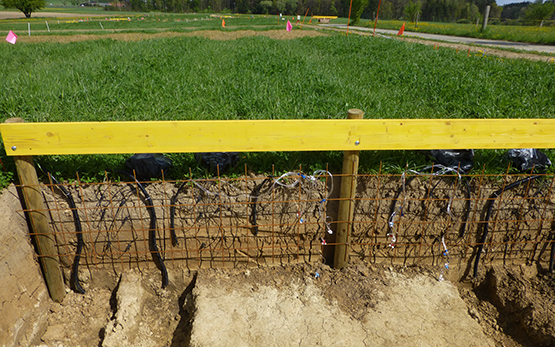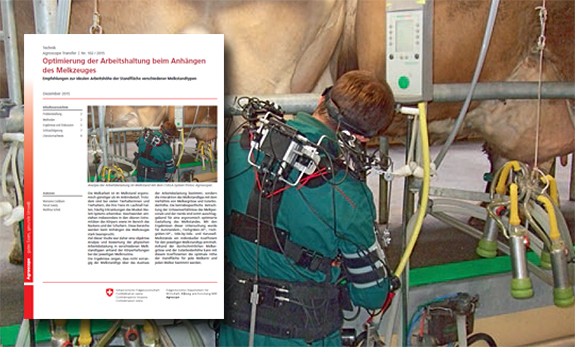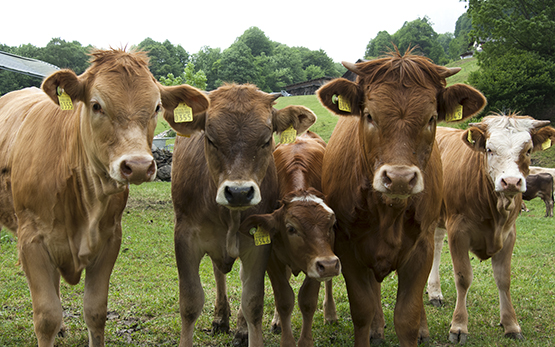Roig-Pons M., Zollinger A.
Slowfeeding: Auswirkungen der Fütterung aus Heunetzen auf die Muskel-Skelett-Gesundheit.
Dans: 1. Pferdeernährungs-Fachkongress ders Tierwissenschaftlichen Institutes. 24. November, Leutesdorf. 2023, 1-47.
Roig-Pons M., Tomozyk S., Gardes L., Briefer S.
Roughage and type of dispenser: What consequences on horse's feeding behaviour?
Dans: EAAP. 5 September, Lyon. 2023, 1-25.
Roig-Pons M., Prats C.
Time-controlled hayracks for horses, what effect on behaviour ?: An exploratory study.
Dans: EAAP. 5 September, Lyon. 2023, 1-26.
Roig-Pons M.
Feeding horses in groups: Hay availability and horses' welfare.
Dans: Joint Graduate Meeting - DZG. 9 November, Bielefeld. 2023, 1-29.
Heikkilä U., Ueda K., Gobbo Oliveira Erünlü N., Baumgartner M., Cockburn M., Bachmann I., Roig-Pons M., Rieder S.
Social network analysis of horses inferred from sensor ear tag and GPS-logger data.
Dans: EAAP 74 Annual Meeting. 26 Augus, Lyon. 2023, 652.
Heikkila U., Ueda K., Baumgartner M., Cockburn M., Bachmann I., Roig-Pons M., Rieder S.
Social network analysis of horses inferred from sensor ear tag and GPS-logger data.
Dans: EAAP 74 Annual Meeting. 26 August, Lyon. 2023, 1.
Hiltebrand C., Roig-Pons M., Baumgartner M., Cockburn M., Doetterl S., Bachmann I., Keller T., Briefer S., Würbel H., Gmel A., Pauler C., Schneider M. K., Nasser R.
Site expérimental de Saint-Aubin : Projets de recherche en cours.
Dans: Jeudi au Haras. 20 juillet, Avenches. 2023, 1.
autres langues: allemand
Gardes L, Roig-Pons M.
Type de fourrage et dispositifs d'affouragement : Quelles conséquences sur le comportement alimentaire et la posture des chevaux?
Dans: 17e Journée de recherche équine suisse. 20 avril, Ed. Agroscope, Haras national suisse HNS. 2023, 13-14.
Roig-Pons M., Briefer S.
Filets à foin : Quels risques pour la santé de nos chevaux?
Dans: 17e Journée de recherche équine suisse. 20 avril, Ed. Agroscope, Haras national suisse HNS. 2023, 28-29.
Roig-Pons M.
Is the use of haynets for horses associated with increased health risks?: A cohort study.
Dans: Walks & Talks. 14 June, Neuchâtel. 2023, 1-41.
Prats C., Roig-Pons M.
Effets des râteliers automatisés sur les groupes de chevaux.
Dans: Journées Sciences et Innovations Equines. 1 juin, Saumur (FR). 2023, 1-22.
Roig-Pons M.
L'utilisation de filets à foin est-elle associée à des risques pour la santé de nos chevaux?
Dans: Journées Sciences et Innovations Equines. 01. juin, Saumur. 2023, 1-43.
Roig-Pons M., Briefer S.
Filet à foins : Quels risques pour la santé de nos chevaux ?
Dans: Journées sciences&innovations équines. 1-2 juin, Saumur. 2023, 1-4.
Prats C., Roig-Pons M.
Effets des râteliers automatisés sur les groupes de chevaux.
Dans: Journées sciences&innovations équines. 1-2 juin, Saumur. 2023, 1-4.
Roig-Pons M.
Chevaux et slowfeeders : évaluation des conséquences sur la santé et le comportement.
Dans: Journée des doctorants de la filière équine. 31 mai, Saumur. 2023, 1-2.
Roig-Pons M., Briefer S.
L'utilisation de filets à foin est-elle associée à des risques pour la santé de nos chevaux?
Dans: Journée de recherche équine suisse. 20 avril, Avenches. 2023, 1-40.
Gardes L., Roig-Pons M.
Type de fourrage et dispositifs d’affouragement : quelles conséquences sur le comportement alimentaire et la posture des chevaux?
Dans: Journée de recherche équine suisse. 20 avril, Avenches. 2023, 1.
Roig-Pons M., Briefer S.
Is the use of haynets for horses associated with increased health risks?
Dans: GCB Symposium. 29. June, Ed. University of Bern, Bern. 2023.
Roig-Pons M., Perot C.
L’ostéopathie animale au service de la recherche en bien-être équin.
Dans: SymbiOsteo 2. 22. octobre, Ed. Union Française des Étudiants Ostéopathes Animaliers, Lyon - Cité Internationale des Congrès. 2022.
Roig-Pons M., Briefer S.
Forage presentation: what associations with horses’ health and behaviour?: A cohort study.
Dans: ISAE 2022. 06. septembre, Ed. The International Society for Applied Ethology, Ohrid - online. 2022.








